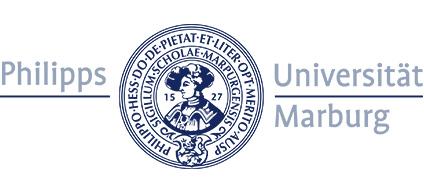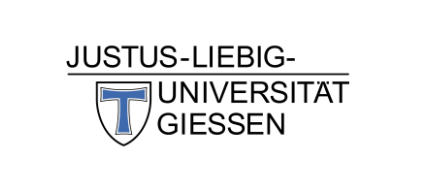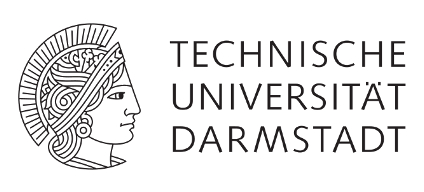17.07.2024 The navigation system in your head
TU researchers have deciphered the processes that take place in the human mind during navigation

How can human navigation behaviour and its uncertainty be understood? A team of researchers led by TU professor Constantin Rothkopf has provided answers to this question in an article now published in the journal “Nature Communications”. According to their computational analysis, the brain uses both information from body cues (such as the motor memory of the path already travelled) and an internal mental map for navigation. The brain takes into account that the available information is incomplete, imprecise and uncertain – and continuously recomputes the path while considering the respective uncertainties.
As we navigate through our environment, we rarely consider the processes taking place in our mind. We need a sense of where our destination is relative to us – for example, because we can see it or because we remember where it is. To get closer to our destination, we see and feel where we are relative to it, and how we have turned and travelled. However, our brain not only compares our current position with the destination, but also constructs and updates a mental map and uses it to plan or correct our path. What feels effortless in everyday life poses great computational challenges for our brain, especially in the dark or in unfamiliar surroundings. Many neurodegenerative illnesses thus show a deterioration in orientation and navigation abilities at an early stage.
Research on navigation has played a major role in the scientific understanding of human and animal behaviour. While it had been assumed that behaviour is best understood as stimulus-response patterns, it became clear that cognitive representations of the outside world – i.e. internal mental states stored in our brains referring to the objects of the outside world– play a major role, particularly for navigation behaviour. The path from the creation of these internal representations to specific actions carried out, such as changing direction, reflect complex connections between perception, internal representation and behaviour.
Research at the intersection of many disciplines
Accordingly, research in the field of navigation is highly interdisciplinary and at the intersection between cognitive science, neuroscience and artificial intelligence. The relevance of this research is also evidenced by the fact that the Nobel Prize in Physiology or Medicine 2014 was awarded for the discovery of neurons in the animal brain, which code both the position in space and also the direction. Since then, similar cells have also been discovered in humans using electrophysiological studies.
Yet many questions remain unanswered. Even for technical systems, it is difficult to always clearly determine the position and orientation. As a result, Google Maps, for example, uses an ellipse to show the changing degree of uncertainty in its position data alongside the presumed position. For the human brain, too, it is important to determine the changing uncertainties in its position across time in order to optimise the next steps. Unlike with technical systems, there can be many causes of the uncertainty in our brain, such as an imprecise mental map or inaccuracies in subjective perception. Human navigation behaviour thus displays a high degree of variability. To reduce these uncertainties, humans can actively seek out information (e.g. by looking for landmarks).
Computer model for the dynamic analysis of human navigation behaviour
By analysing navigation data from three international laboratories from the last 15 years, the research team was able to show that not only is navigation behaviour determined by the integration of several sources of information, but the changing uncertainty of this information is also dynamically calculated and incorporated into the navigation decisions. A computer model developed by the team makes it possible to predict the human navigation behaviour found in the experiments, including the resulting errors and variability. The model is the first of its kind and not only provides a parsimonious explanation of the errors that humans make during navigation, but also allows making quantitative and qualitative predictions about human navigation behaviour.
Fabian Kessler, lead author of the article, explains: “What we could show is: during navigation, humans plan their actions based on subjective, uncertain mental representations, which are gradually formed by the interaction of uncertain perception and uncertain actions, ultimately leading to the variability in navigation behaviour.” The researchers used the Lichtenberg Cluster high-performance computers at TU Darmstadt to simulate the algorithms of the brain. Intensive calculations were required in order to cope with constantly changing uncertainties, even if we, as humans, are not aware of this.
Project ACTOR und Clusterproject „The Adaptive Mind“ (TAM)
The publication was part of the “ACTOR – Towards a computational account of natural sequential behavior” project by Professor Rothkopf. This has been funded by the European Research Council (ERC) for five years since 2022 with a renowned ERC Consolidator Grant totalling two million euros. The publication in “Nature Communications” is also a focus publication of the project “The Adaptive Mind” (TAM) on the adaptability of the human mind. TAM is in the running for a Cluster of Excellence in the prestigious Excellence Strategy by the German federal and state governments
Publication
Kessler, F., Frankenstein, J. & Rothkopf, C.A.:
Human navigation strategies and their errors result from dynamic interactions of spatial uncertainties.
Nature Communications 15, 5677 (2024).
DOI: 10.1038/s41467-024-49722-y


